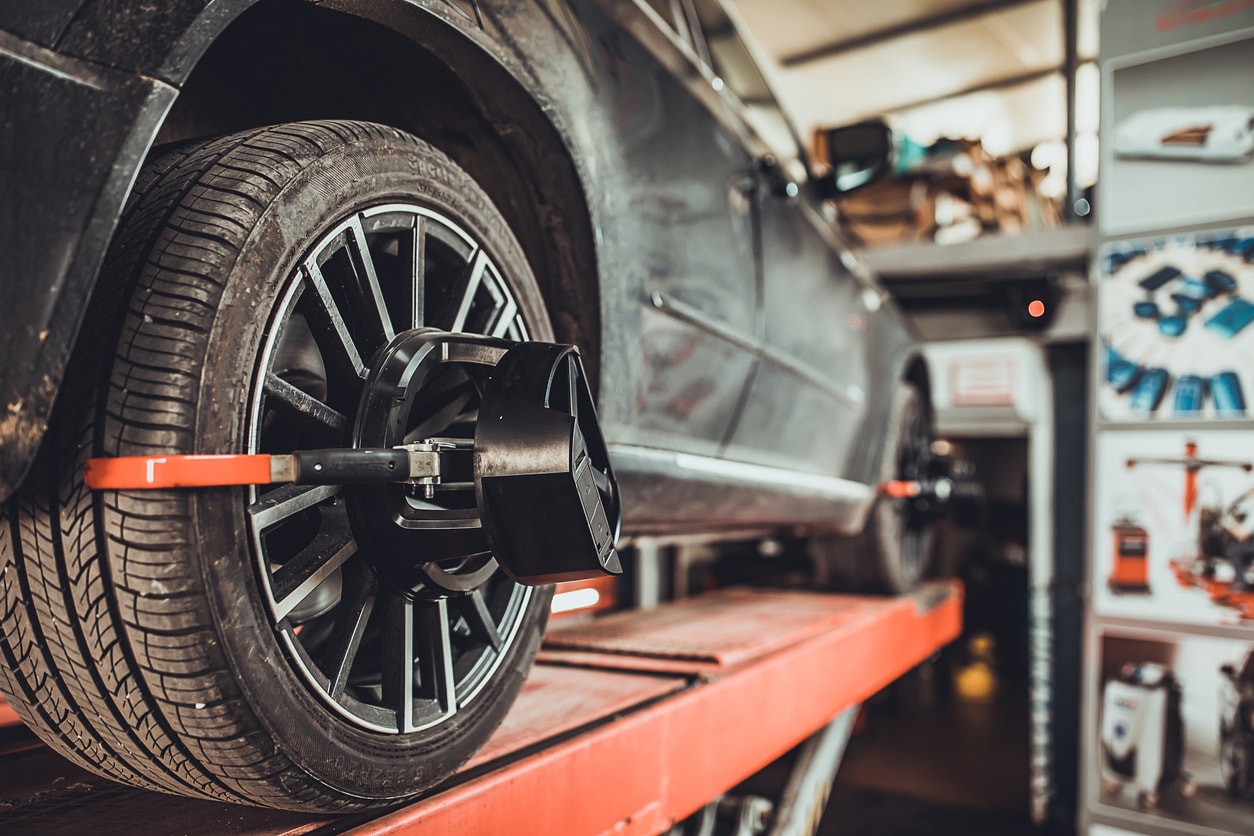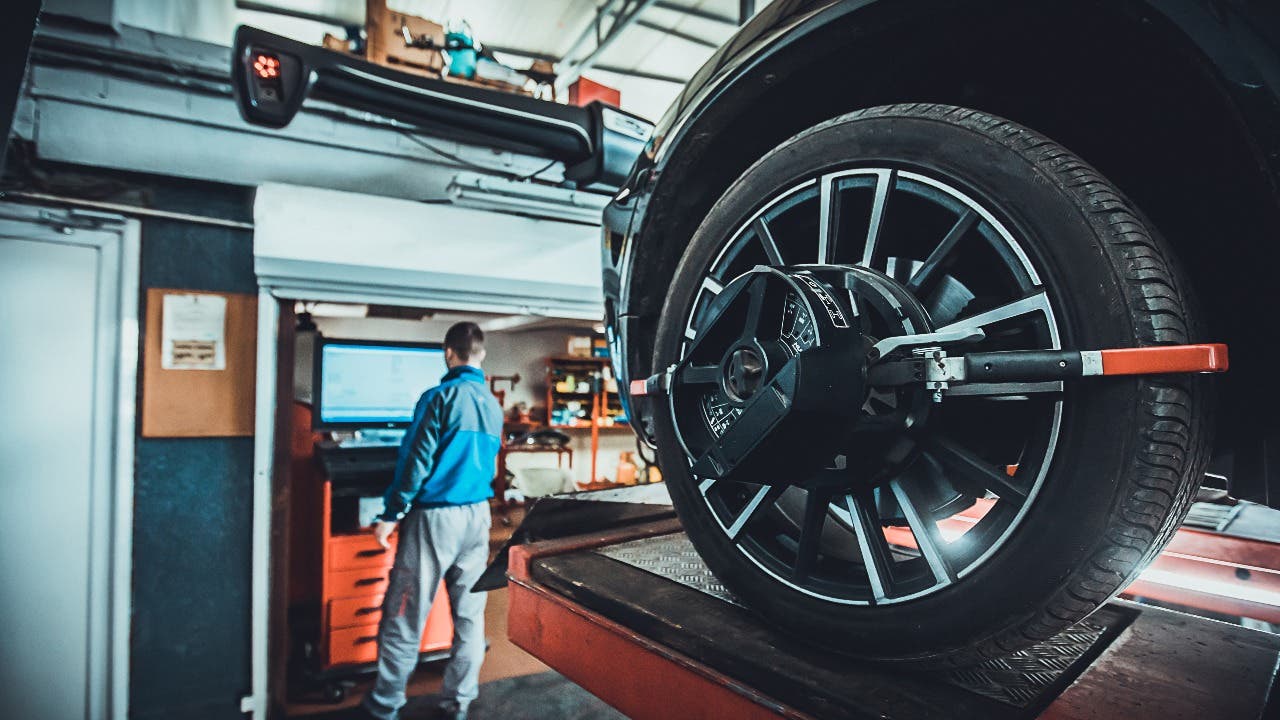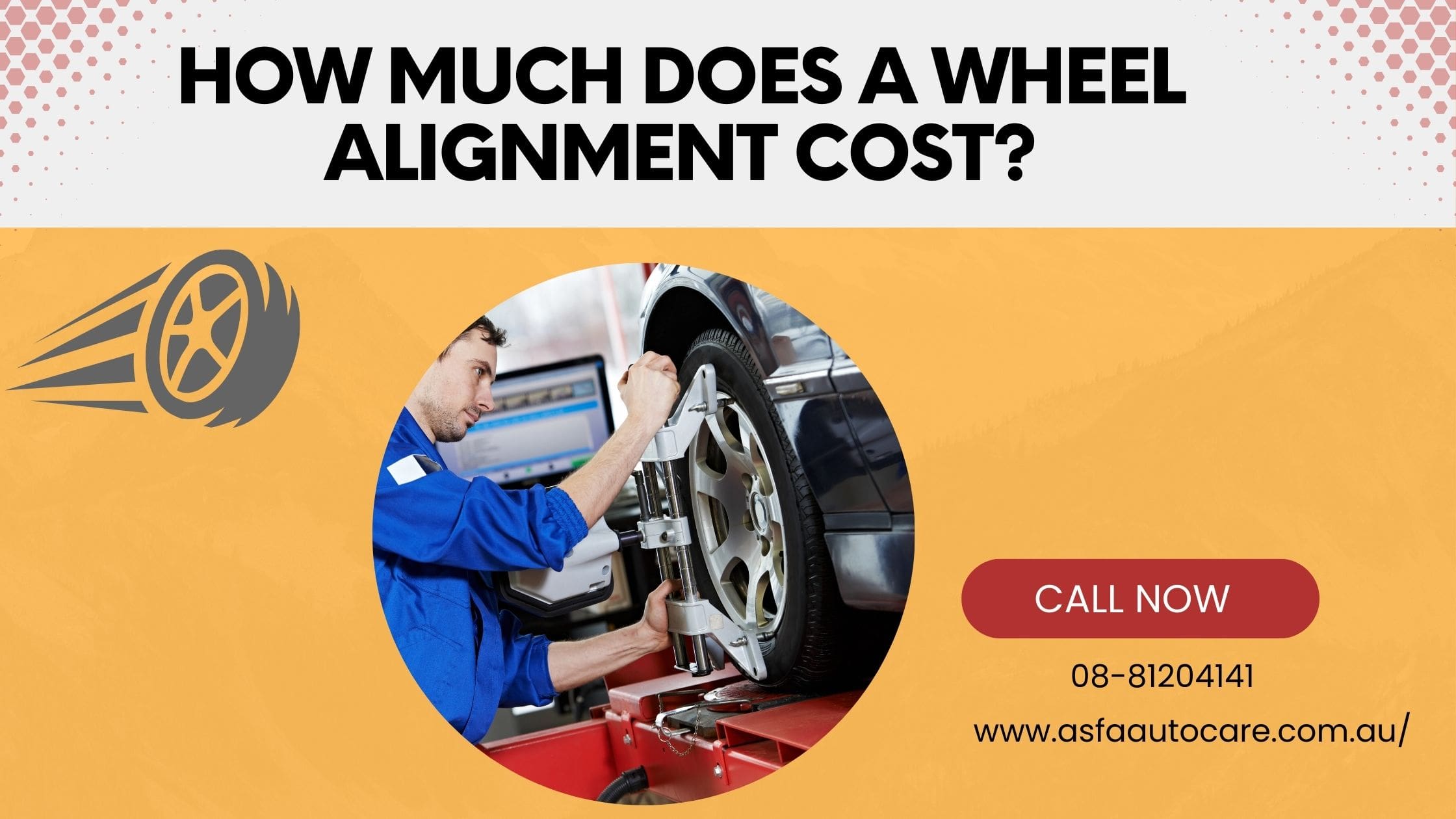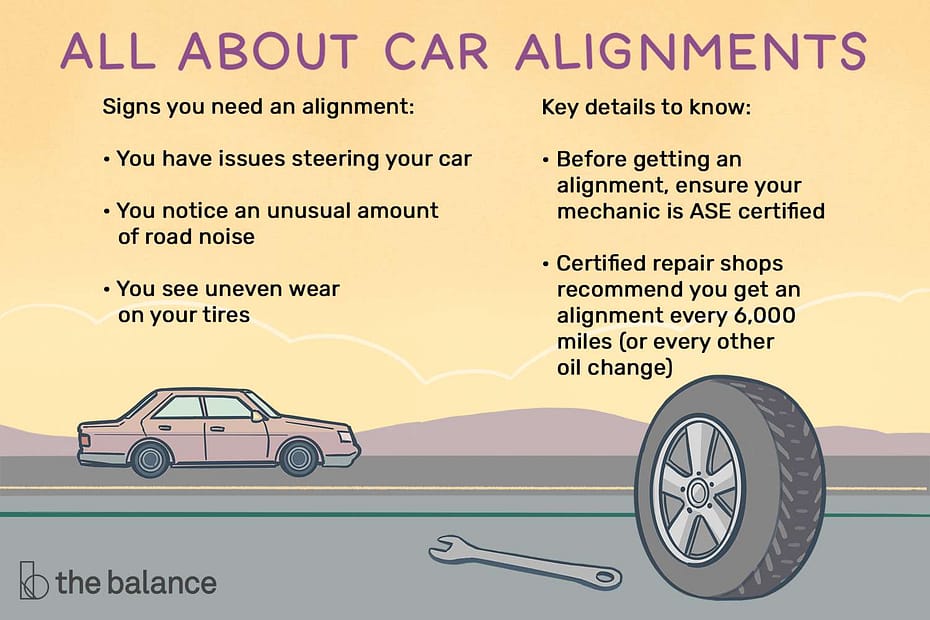Car alignment costs vary depending on the make and model of the vehicle, typically ranging from $75 to $200. Now, let’s delve into the world of car alignment and explore the factors that affect its price.
From uneven tire wear to difficulty steering, a misaligned car can cause numerous problems. Properly aligning your vehicle not only ensures a smooth and comfortable ride but also maximizes the lifespan of your tires. We will discuss the importance of car alignment, how often you should get it done, signs of misalignment, and the factors that influence the cost of getting your car aligned.
So, let’s get started and learn about everything related to car alignment and its associated costs.
The Importance Of Car Alignment
Proper car alignment plays a crucial role in ensuring safety and optimal performance of your vehicle. It involves adjusting the angles of your tires to align with the manufacturer’s specifications, allowing for even tire wear and improved handling. Ignoring car alignment can lead to a variety of issues that affect both your safety and your vehicle’s overall performance.
Safety
One of the primary reasons why car alignment is important is for your safety on the road. Misaligned wheels can result in reduced stability, making your car more difficult to control, especially during emergency situations. This can lead to an increased risk of accidents, putting your life and the lives of other road users in danger. By ensuring proper car alignment, you can have peace of mind knowing that your vehicle is responsive and under your control, even in unexpected circumstances.
Performance
Car alignment also has a significant impact on your vehicle’s performance. When your wheels are properly aligned, they are designed to work together in harmony, minimizing rolling resistance and maximizing fuel efficiency. Your car will be able to travel smoothly, with improved handling and maneuverability. On the other hand, when your wheels are misaligned, it can cause uneven tire wear, which can result in reduced traction, increased braking distance, and a decrease in overall performance.
Effects Of Misaligned Wheels
Misaligned wheels can have numerous negative effects on both your vehicle and your driving experience. Here are some common consequences of having misaligned wheels:
1. Uneven Tire Wear: Misalignment causes tires to wear unevenly, reducing their lifespan and requiring more frequent replacements. 2. Poor Fuel Efficiency: Misaligned wheels increase rolling resistance, causing your engine to work harder and decreasing fuel efficiency. 3. Handling and Steering Issues: When wheels are misaligned, your car may pull to one side, requiring you to constantly correct your steering. This can lead to driver fatigue and make the vehicle more difficult to control. 4. Vibrations and Noise: Misalignment can result in vibrations and noise coming from the steering wheel or the vehicle itself. These vibrations can be uncomfortable and indicate a problem that needs to be addressed. 5. Suspension Damage: Misaligned wheels can put added stress on your suspension system, leading to premature wear and potential damage to other components. 6. Increased Braking Distance: Misalignment affects the even distribution of weight on your tires, reducing their grip on the road and increasing the distance it takes for your car to come to a stop. Maintaining proper car alignment is essential to prevent these issues and ensure a safe and smooth driving experience. By getting regular alignment checks and adjustments, you can extend the lifespan of your tires, improve fuel efficiency, and enhance the overall performance and safety of your vehicle.
Credit: www.firestonecompleteautocare.com
Factors Affecting Alignment Costs
Car alignment costs vary depending on several factors including the type of vehicle, the region, and the specific alignment needed. Additionally, the make and model of the car, and the complexity of the alignment process can also impact the overall cost of the service.
Factors Affecting Alignment Costs Car alignment is a crucial aspect of vehicle maintenance that ensures optimal performance and improves the overall driving experience. When it comes to the cost of car alignment, several factors come into play which can influence the final price. Understanding these factors is essential for car owners to make informed decisions about their alignment needs. In this section, we will discuss three key factors affecting alignment costs: the type of alignment, vehicle type, and geographic location.Type Of Alignment
The type of alignment required for your vehicle is one of the primary determinants of the overall cost. There are typically two types of car alignments: two-wheel alignment and four-wheel alignment. A two-wheel alignment focuses on aligning the front wheels of the vehicle, while a four-wheel alignment includes both the front and rear wheels. Generally, a four-wheel alignment is more comprehensive and precise, resulting in a higher cost.Vehicle Type
Vehicle type also plays a significant role in determining alignment costs. Different vehicles have varying alignment requirements based on their make, model, and size. For instance, larger vehicles such as trucks or SUVs often require more time and effort to align properly compared to smaller cars. As a result, the cost of aligning a larger vehicle tends to be higher than aligning a compact car.Geographic Location
The geographic location where you seek alignment services can also impact the overall cost. Alignment prices can vary depending on the region or city due to factors like local competition and the cost of living. For example, alignment services might be more expensive in larger cities compared to rural areas. It is essential to factor in the location when budgeting for car alignment services to ensure you are getting the best value for your money. In conclusion, several factors contribute to the cost of car alignment. The type of alignment required, the vehicle type, and the geographic location all play a significant role in determining the final price. By considering these factors, car owners can make informed decisions about their alignment needs and ensure their vehicles stay in optimal condition without breaking the bank.Average Costs For Car Alignment
When maintaining your car, one important aspect to consider is the alignment. Proper car alignment ensures optimal tire wear and handling. Understanding the average costs for car alignment will help you budget accordingly for this essential maintenance.
Front-end Alignment
Front-end alignment typically costs between $50 to $75. This type of alignment focuses on adjusting the front wheels to the manufacturer’s specifications. It is suitable for vehicles with a solid rear axle, as the rear wheels are not adjustable.
Four-wheel Alignment
Four-wheel alignment is more comprehensive than front-end alignment, involving adjustments for both front and rear wheels. The average cost for this service ranges from $100 to $150. This alignment type is suitable for vehicles with an independent rear suspension.
Additional Services
- Toe Alignment: This adjustment aligns the tires’ direction and typically costs around $50 to $75.
- Camber Alignment: This corrects the angle of the wheels and may add an extra $50 to $75 to the total cost.
- Wheel Balancing: Aligning wheels in unison to reduce vibration might require an additional $20 to $30.
Diy Vs. Professional Alignment
When it comes to car alignment, the choice between DIY and professional services is crucial. Let’s delve into the benefits of professional alignment and risks associated with DIY methods.
Benefits of Professional Alignment (H3 Heading)Benefits Of Professional Alignment
Ordered List- Expertise in precision adjustments.
- Specialized equipment for accurate measurements.
- Professional inspection for potential issues.
- Enhanced driving experience and safety.
Risks Of Diy Alignment
Unordered List- Potential misalignment due to lack of experience.
- Inaccurate adjustments without proper tools.
- Risk of causing damage to the vehicle.
- Safety hazards if alignment is not done correctly.
Cost Comparison
Table| DIY Alignment | Professional Alignment | |
|---|---|---|
| Cost | Relatively cheaper initially | Higher upfront cost but potentially saves money in the long run |
| Accuracy | Dependent on skill level and tools | Precise alignment by trained professionals |
| Time | Time-consuming and may require multiple attempts | Efficient service with quicker results |
Tips For Maintaining Proper Alignment
Regular Inspections
Regular inspections help identify alignment issues early and prevent further damage. Inspect tires for uneven wear and steering wheel alignment regularly.
Driving Habits
Avoid hitting potholes and curbs to maintain proper alignment. Be mindful of rough road conditions to minimize alignment problems.
Suspension Components
Ensure suspension components such as ball joints and tie rods are in good condition for proper alignment. Address any issues promptly.

Credit: www.bankrate.com

Credit: www.asfaautocare.com.au
Frequently Asked Questions On How Much Is Car Alignment
How Much Does It Cost To Get In Alignment?
The cost of getting an alignment varies, but it typically ranges from $50 to $100 for a standard alignment. Prices can vary depending on your location, the type of vehicle you have, and any additional services needed.
How Do You Know If Car Needs Alignment?
To determine if your car needs alignment, watch out for signs like uneven tire wear, the car pulling to one side, steering wheel vibration, or a crooked steering wheel when driving straight. If you notice any of these, it’s time to get your car’s alignment checked by a professional.
Is It Worth Paying For Wheel Alignment?
Yes, paying for wheel alignment is worth it as it helps extend tire life and improve fuel efficiency. Proper alignment also enhances vehicle handling and safety. Regular alignment can prevent costly repairs and uneven tire wear.
Is It Ok To Drive With Bad Alignment?
Driving with bad alignment can lead to uneven tire wear, poor handling, and reduced fuel efficiency. It’s not safe and can cause further damage to your vehicle. Get alignment issues fixed promptly.
Conclusion
Car alignment costs vary based on factors like location and the specific service needed. Investing in regular alignment can save you money on repairs in the long run, making it a smart car care choice. Be sure to get quotes from different shops to find the best deal for you.
